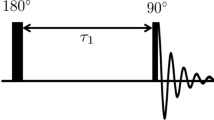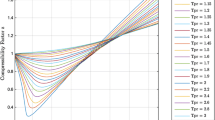Abstract
The critical characteristic temperatures, i.e. onset temperature and end temperature of chemical reactions, are hard to determine. Instead, the extrapolated ones by the tangent method are commonly used. However, problems such as large errors and uncertainty of the tangent method are restricting its application. In this paper, the noise power window function (nPWF®) method was firstly proposed and applied to determine the critical temperatures. The construction theory of nPWF® method and analysis process were comprehensively introduced. Three typical reaction processes including decomposition of calcium carbonate (CaCO3), melting/solidification of tin (Sn) and carbon gasification were conducted under controlled temperature programmes. The detection signals of DTG (derivative thermogravimetric analysis), DTA (differential thermal analysis) and gas component yield were interpreted to the nPWF signal to determine the critical temperatures, with a high accuracy improved by 1–2 orders of magnitude than the extrapolated ones. Finally, accuracy, applicability and superiority of the nPWF® method were analysed.








Similar content being viewed by others
References
Torquetti C, Ferreira PO, de Almeida AC, Fernandes RP, Caires FJ. Thermal study and characterization of new cocrystals of ciprofloxacin with picolinic acid. J Therm Anal Calorim. 2022;147:1299–306. https://doi.org/10.1007/s10973-020-10479-3.
Xiao X, Li J, Hu DS, Li K, Xu B, Tian J, Li CY. Experimental study on the critical temperature of thermal explosion of CL-20 powder (Chinese). J Solid Rocket Technol. 2022;45:146–51. https://doi.org/10.7673/j.issn.1006-2793.2022.01.021.
Zhang J, Xue BB, Rao GN, Chen LP, Chen WH. Thermal decomposition characteristic and kinetics of DINA. J Therm Anal Calorim. 2018;133:727–35. https://doi.org/10.1007/s10973-017-6732-3.
Valdes OJR, Moreno VC, Waldram SP, Vechot LN, Mannan MS. Experimental sensitivity analysis of the runaway severity of Dicumyl peroxide decomposition using adiabatic calorimetry. Thermochim Acta. 2015;617:28–37. https://doi.org/10.1016/j.tca.2015.07.016.
Mao BB, Huang PF, Chen HD, Wang QS, Sun JH. Self-heating reaction and thermal runaway criticality of the lithium ion battery. Int J Heat Mass Tran. 2020;149: 119178. https://doi.org/10.1016/j.ijheatmasstransfer.2019.119178.
Roduit B, Hartmann M, Folly P, Sarbach A, Dejeaifve A, Dobson R, Kurko K. Kinetic analysis of solids of the quasi-autocatalytic decomposition type: SADT determination of low-temperature polymorph of AIBN. Thermochim Acta. 2018;665:119–26. https://doi.org/10.1016/j.tca.2018.05.015.
Li B, Chen G, Zhang H, Sheng CD. Development of non-isothermal TGA–DSC for kinetics analysis of low temperature coal oxidation prior to ignition. Fuel. 2014;118:385–91. https://doi.org/10.1016/j.fuel.2013.11.011.
Vyazovkin S, Burnham AK, Criado JM, Perez-Maqueda LA, Popescu C, Sbirrazzuoli N. ICTAC kinetics committee recommendations for performing kinetic computations on thermal analysis data. Thermochim Acta. 2011;520:1–19. https://doi.org/10.1016/j.tca.2011.03.034.
Li RB, Lu TT, Xie MZ, Liu FQ. Analysis on thermal behavior of fluorides and cyanides for heat-treating spent cathode carbon blocks from aluminum smelters by TG/DSC-MS & ECSA®. Ecotox Environ Safe. 2020;189: 110015. https://doi.org/10.1016/j.ecoenv.2019.110015.
ASTM D2883–95. Standard test method for reaction critical temperature of liquid and solid materials. 2005.
ISO 11357–1. Plastics – Differential scanning calorimetry (DSC) – Part 1: General principles. 2016.
Wickens TD. Elementary signal detection theory. New York: Oxford University Press; 2001.
Xia HD, Wei K. Equivalent characteristic spectrum analysis in TG–MS system. Thermochim Acta. 2015;602:15–21. https://doi.org/10.1016/j.tca.2014.12.019.
Wang YL, Qiu P, Qu YM. Study on freezing point and melting point at Sn fix point (Chinese). Mod Meas Test. 2000;5:32–4. https://doi.org/10.16428/j.cnki.cn11-4827/t.2000.05.006.
Acknowledgements
This work was supported by the National Key Research and Development Program of China [2022YFC2904403] and the Scientific Instrument Developing Project of the Chinese Academy of Sciences [YJKYYQ20190046]. R.B.L. thanks Prof. Shaojun Zhang (Zhengzhou University) for helpful discussion.
Funding
The study was funded by the National Key Research and Development Program of China, 2022YFC2904403, hosted by Rongbin Li; also was funded by the Scientific Instrument Developing Project of the Chinese Academy of Sciences, YJKYYQ20190046, hosted by Hongde Xia.
Author information
Authors and Affiliations
Contributions
RL (first author) was involved in conceptualization, formal analysis, writing—reviewing and editing, and funding acquisition. QH curated the data. ZH wrote the original draft. KW was responsible for resources and validation. HX contributed to conceptualization, methodology and supervision. FL participated in supervision.
Corresponding author
Additional information
Publisher's Note
Springer Nature remains neutral with regard to jurisdictional claims in published maps and institutional affiliations.
Rights and permissions
Springer Nature or its licensor (e.g. a society or other partner) holds exclusive rights to this article under a publishing agreement with the author(s) or other rightsholder(s); author self-archiving of the accepted manuscript version of this article is solely governed by the terms of such publishing agreement and applicable law.
About this article
Cite this article
Li, R., Huang, Q., Huang, Z. et al. Detection and analysis of critical characteristic temperatures of the reaction process. J Therm Anal Calorim 148, 13487–13496 (2023). https://doi.org/10.1007/s10973-023-12650-y
Received:
Accepted:
Published:
Issue Date:
DOI: https://doi.org/10.1007/s10973-023-12650-y




